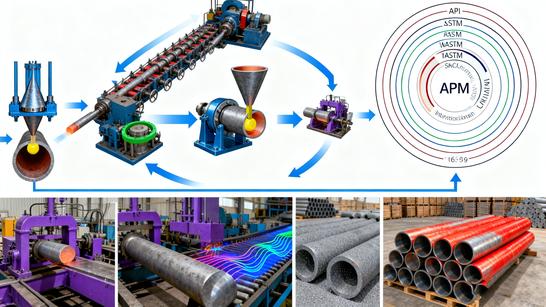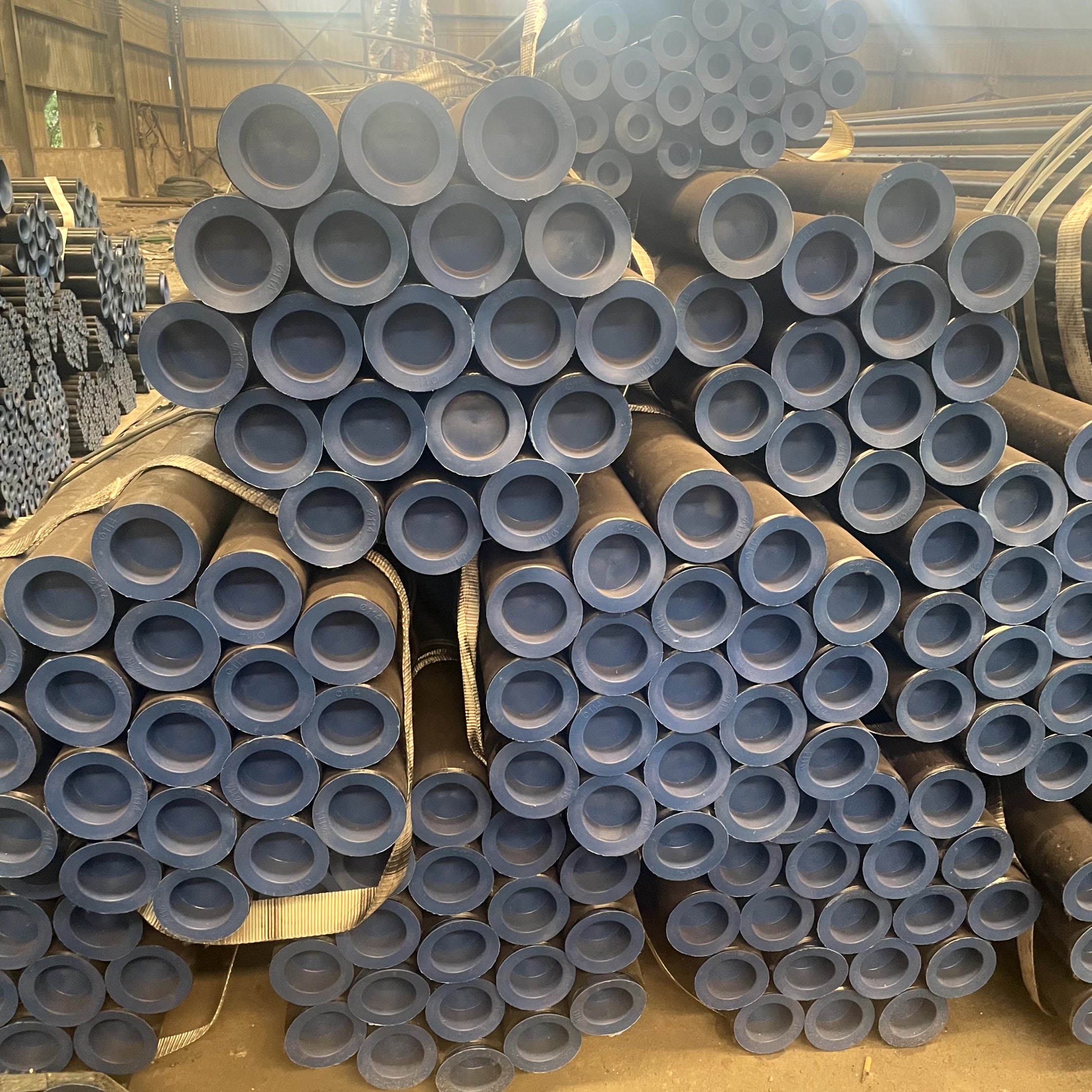In high-stakes industries like oil and gas, power generation, and chemical processing, a seamless pipe is not just a tube; it's a critical component whose failure can lead to severe operational and safety risks. As a leading manufacturer, we understand that true quality is measured not just in the manufacturing process, but in the rigor of the inspection.
This guide provides a professional inspection checklist and expert tips to help buyers implement robust quality control seamless pipe protocols and confidently identify superior products before they reach the job site.
1. The Dimensional Purity Test: Judging Size Tolerance
A seamless pipe's strength is directly linked to the uniformity of its dimensions. High-quality pipes adhere strictly to specified standards (e.g., API 5L, ASTM A106).
1.1. Essential Dimensional Checks
| Inspection Point | Measurement Tool | Acceptance Criteria |
| Outer Diameter (OD) & Ovality | Vernier Calipers, Micrometers, Ring Gauges | Measure OD at various points around the circumference and along the length. Ovality (the difference between the max and min OD) must be within the tolerance specified by the relevant standard (e.g., API 5L). |
| Wall Thickness (WT) | Ultrasonic Thickness Gauge (UT), Micrometer | Measure WT at minimum of eight points around both ends. UT devices are preferred for non-destructive, detailed readings. Quality pipes should maintain WT consistency to handle design pressure. |
| Straightness | Straightedge and Feeler Gauge | Check for full-length straightness and local curvature against the required tolerance (usually a maximum deviation over a fixed length, like one meter). |
| End Squareness | Square (for cut angle) | The cut ends must be perpendicular to the pipe axis to ensure a proper fit for welding or threading. |
Manufacturer Tip: Dimensional accuracy is tougher to achieve in seamless pipes than in welded pipes. Significant deviations (beyond standard tolerances) often indicate poor control during the hot-rolling or cold-drawing process.
2. Surface Scrutiny: Identifying Common Pipe Defects
The pipe's surface is the first line of defense against corrosion and stress. A detailed visual inspection is essential to identify various pipe defects.
2.1. Surface Defect Checklist (Visual Inspection)
| Defect Type | Appearance | Quality Implication |
| Cracks (Dangerous Defect) | Fine, often linear or spiral fractures on the inner or outer surface. | High Risk: Indicates potential material segregation or excessive internal stress during manufacturing. Pipe must be rejected. |
| Folds (Laps) | Overlapping metal layers or a folded ridge on the surface. | High Risk: A discontinuity that can lead to early failure under pressure. Usually caused by poor tube billet quality or improper piercing/rolling. |
| Pits and Gouges | Small depressions or longitudinal scratches from handling/tooling. | Medium Risk: Reduces wall thickness locally, compromising strength and creating stress concentration points. Must be below acceptable depth limits (often $<12.5\%$ of WT). |
| Scabs (Rolling) | Thin, flaky metal layers loosely attached to the surface. | Medium Risk: Indicates surface impurities in the billet that were rolled out. Can detach and compromise internal flow or coating adhesion. |
| Scale and Rust | Dark, oxidized layers or red rust. | Low Risk (if superficial): Requires cleaning, but heavy, pitting rust suggests improper storage and can hide deeper issues. |
Crucial Step: All inspectors must use a high-intensity light source and rotate the pipe to catch defects that might otherwise be hidden in the shadow of surface irregularities.
3. Internal Integrity: Non-Destructive Testing (NDT)
For critical service, relying solely on visual and dimensional checks is insufficient. High-quality seamless pipes undergo rigorous NDT to guarantee internal soundness.
| NDT Method | Target Defect | Why it Matters for Seamless Pipes |
| Ultrasonic Testing (UT) | Internal cracks, laminations, inclusions, and wall thickness monitoring. | UT is the most common method to confirm the integrity of the material structure, ensuring no hidden flaws compromise its pressure rating. |
| Magnetic Particle Testing (MT) | Surface and near-surface cracks in ferromagnetic materials (Carbon/Alloy Steel). | Used to easily confirm the absence of surface-breaking linear indications or pipe defects missed by the naked eye. |
| Hydrostatic Testing | Confirms leak-proof integrity under pressure. | The final assurance that the pipe can withstand the specified test pressure without rupture or leakage, confirming the effectiveness of the design and manufacture. |
Manufacturer Requirement: Always request the Mill Test Certificates (MTRs) to verify that these tests were performed and that the pipe material properties (chemical composition, tensile strength, yield strength) comply fully with the required standard (e.g., API, ASTM).
By integrating this inspection checklist into your procurement workflow, you shift from simply accepting material to actively implementing robust quality control seamless pipe measures. Choosing quality is choosing safety, and it is the single most effective way to prevent costly and hazardous failures downstream.
Contact us today to learn more about our commitment to world-class seamless pipe quality and inspection standards.





